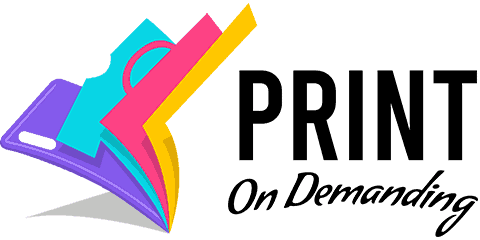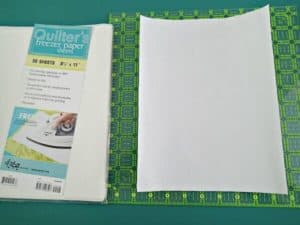
At some point, your print-on-demand store went from being a fun side hobby to a business venture you’d like to more seriously consider. You’re aware the industry is quite saturated, which means competition will be steep. To differentiate yourself from everyone else, you must use marketing methods. What are the best ways to promote your business?
You can market your print-on-demand store in the following ways:
- Learn your target audience
- Get on social media
- Start an email list
- Optimize your store
- Ask for product reviews and use them as testimonials
- Pay for advertising
- Do a contest or giveaway
You’re not a professional marketer, and that’s okay. In this extensive guide, we’ll share tips, tricks, and more information on how to use the above promotional methods to drive more traffic and sales to your print-on-demand shop. You’re definitely going to want to keep reading!
7 Ways to Promote and Market Your Print-on-Demand Business
Know Your Target Audience
Before you do anything, you need to know who you’re marketing to. This group is known as your target audience.
Your target audience will be built up of segments, also referred to in marketing as buckets. Each segment likes your products, but slightly different types of products. For instance, a 20-year-old wouldn’t be into the same styles as a 40-year-old, at least for the most part. Maybe the younger audience member would want some of your edgier shirts while the older customer could be looking for a gift like a printed pen or mug.
When you know who your target audience is, you can create tailored marketing plans. The way you’d market to the 20-year-old shirt collector would be different than how you’d go after the 40-year-old pen buyer. When your marketing campaign feels personalized according to an audience member’s tastes, interests, and pain points, they’re more receptive to your offer.
Real quick, what is a pain point? In marketing, a pain point is a problem a lead (a soon-to-be customer) or a customer has. Let’s use the 40-year-old looking for pens as an example. Perhaps he wants to buy a pen for someone’s birthday, but he wants it customized. He’s been unable to find what he’s looking for until now, so that’s his pain point.
By learning the pain points of your audience, you can then present your products–such as your custom-printed pens–as the solution.
To start, it’s okay if your target audience has more general interests, like printed t-shirts or pens. Over time, as you become more of a marketing master, you’ll want to narrow down your target audience to niche specifications. For example, instead of targeting audience members who want t-shirts, it’d be something like art-style printed shirts.
Here’s a handy YouTube video about going after a niche market. Save it for later:
Where does your target audience even come from? Partly from the customers who have bought from you before. You also want to study the audiences of your competitors as well as the typical people who buy the sort of things you’re selling.
When segmenting your audience, you can use all sorts of criteria, including:
- Psychographics, such as someone’s beliefs and values
- Behavior, including their buying behavior
- Geographics
- Demographics like age, gender, occupation, marital status, income, race, education, and ethnicity
Create a Social Media Presence
Congratulations, you just did one of the hardest parts of marketing your print-on-demand business, defining your audience. This isn’t a one-and-done though. As your store grows and new leads and customers are attracted to your business, you’ll have to go back periodically and sort your audience again.
For now though, we can move on. The next promotional step to follow is to create a social media presence. No, you don’t want to use your personal social accounts for this purpose, but a bona fide Facebook, Twitter, Instagram, and even YouTube profile for your print-on-demand store.
It’s free to sign up on these social accounts, although we do have some paid marketing methods a little later that you will want to use. We recommend creating account handles that match that of your print-on-demand business name. This will make you more easily searchable. If by chance that name is taken, then try a variation on the name such as adding an underscore or even a period. Tacking on numbers to the end of your name just looks unprofessional.
Oh, and please make sure you’re not creating a personal profile, but a business one. Yes, there’s a big difference. Here is the link for Twitter’s business account signup; here’s the one for Facebook and here’s the one for Instagram. Creating a business account now will make it easier to begin advertising through these social platforms later, but let’s not get ahead of ourselves quite yet.
Now that you have your social accounts up, what do you do with them? Plenty of things! You can post works in progress if you’re comfortable sharing your designs that early. When a new design is about to hit your print-on-demand store, you can share pictures to get your audience hyped up. As your store offers a discount or sale, you can promote it on social media to drive more traffic to your web shop.
Social media is also a useful chance to engage with your audience, responding to their comments or questions. This will build and strengthen these relationships and foster customer loyalty. The more loyal your customers are, the more they will buy products from your print-on-demand store.
How often should you post on social media? Experts aren’t quite decided, as lots of factors come into play, such as the type of business you run and your audience. At least daily is a good rule of thumb. If you post too seldom, some of your audience could forget about you!
This 10-minute video on print-on-demand eCommerce social trends is definitely worth a watch:
Start an Email List
Despite the prevalence of social media, lots of platforms have introduced filters and settings that make it hard to see all posts. If you don’t get notified about a user’s posts on Instagram, those posts might not be shown to you anymore. Facebook works in a similar fashion. Thus, even though you could have lots of social media subscribers, there’s no guarantee they’re all seeing your social media posts.
These audience members could miss out on all your new products, deals, and discounts unless they check your print-on-demand store periodically. Having an email list can really bridge the gap. You can send updates about your shop straight to a user’s inbox.
The way this usually works is you’d post a pop-up called an opt-in form on your website. This opt-in form would request the contact information of the lead, including their first and last name, their email address, and maybe a phone number. The lead would get something in exchange for signing up, known as a lead magnet, such as a free resource list or a few chapters of an eBook.
Considering you’re a print-on-demand business and you have an online store on a site like Etsy rather than your own website, you have to do things a little differently to get your email list off the ground.
You can use social media to generate an email list by linking to your store landing page on your social accounts. Keep a static opt-in form on the landing page to encourage sign-ups. If you don’t quite have a landing page yet, that’s alright, but prioritize that sooner than later.
You can also put a call-to-action or CTA button on your Facebook Business Page that can become your opt-in form. Facebook goes step by step on how to do it on this page. When users arrive to your Facebook profile, they can click the CTA and share their email information with you.
Now that you have an email list, it’s time to actually send some content. This handy Youtube video includes some print-on-demand email templates you can use to get started communicating with your audience:
How often should you email your customers? You need to stay top-of-mind, so that means reaching out through email at least weekly. Beware of over-emailing, such as every day or several times a day. You’ll irritate your audience quickly, and they’ll either unsubscribe or mark your emails as spam.
Optimize Your Store
Have you heard of SEO before? Probably, but do you know what it means? SEO stands for search engine optimization. In other words, SEO is about the measures you follow to ensure your store shows up higher in the Google results page. The goal is to get to number one, but moving up on the front page is also a big accomplishment.
When most people talk about optimizing for SEO, they’re referring to a website. We’re assuming you don’t have a website, only your print-on-demand store. Maybe someday you’ll sell your products on your own site, but today is not that day.
Fortunately, you can optimize your print-on-demand store the same way you would a website. An optimized site is one that looks good on mobile devices, loads quickly, and follows SEO best practices for a good Google ranking.
You also want to use relevant keywords whenever possible. How do you know which keywords are relevant? By looking to the competition and performing keyword research through a service like Google Keyword Planner.
You start by putting in a keyword, such as “t-shirt printing,” and then let Google suggest keywords. Make sure you check the performance of keywords based on their popularity in search engines.
Once you have your relevant keywords, incorporate them into your copy. For instance, in your bio, you might say something like “[company name] is a t-shirt printing business in Chicago.” You want your keywords to read naturally, as robotic copy is very much not going to help your page rank.
Avoid keyword stuffing as well, where you add a keyword as many times as space will allow so it might rank better. The Google algorithm will punish this behavior.
By the way, the relevancy of your keywords is not set in stone. Every few months, you want to refresh your keyword research and update your print-on-demand store accordingly.
This video has more SEO tips for print-on-demand companies, so make sure you check it out:
Use Reviews as Testimonials
As more and more people begin buying products like printed t-shirts, pillows, pens, hoodies, mugs, and the like from your print-on-demand store, they will want to talk about their experience. It’s in our nature these days to share our opinions about everything, so expect reviews. Some will be positive, others not so much. That’s natural and bound to happen. Don’t start deleting negative comments out of nowhere though. People will notice and it will turn them off wanting to do business with you again.
Focus more on the positive reviews, as they’ll take you further. Once you have a bunch, you might take two or three of your most shining reviews and use them as a testimonial on your print-on-demand store page. If you can get in touch with the reviewer and ask their permission, try to do that. Otherwise, you can always omit their name or call the customer by their first name and last initial to maintain a degree of anonymity.
Testimonials are a hugely important means of encouraging future leads to buy from your print-on-demand store. Here are some benefits of testimonials:
- Establishes credibility: Every print-on-demand business wants to seem legit, but that’s sometimes easier said than done. When you have a slew of glowing reviews to share and those reviews are authentic, it increases your store’s credibility. If a lead was reluctant to buy from you before, the testimonials could be what convinces them to give your business a try.
- Shareable: Your best reviews are also very much shareable, be that across Twitter, Facebook, or your other favorite social media platforms. Seeing how much someone raved about your print-on-demand products will generate interest and curiosity. You could see more traffic to your store and boosted sales as well.
- Builds trust: The Internet is a convenient place to shop, don’t get us wrong, but some corners of the web can be shady. Why should a lead or customer trust you? Through your testimonials, you show that other customers have had a more than positive experience doing business with you. That builds trust in other potential customers as well.
- Strengthens customer loyalty: If it’s your testimonial that catapulted a company towards success, that would be pretty flattering, right? You’d also quite appreciate that company for choosing your review to be splashed everywhere. Your customers will feel the same. Your print-on-demand company’s customer loyalty could increase by choosing strong testimonials to post.
So what makes a good review that’s worth sharing? You want a testimonial that’s somewhat specific. Perhaps the user gushes about the quality of your product, the design originality, the softness of the clothing material, or something similar. These reviews are far more useful than someone saying “awesome store!” That review doesn’t really tell you anything at all about what makes your print-on-demand business so awesome.
Pay for Advertising Space
Remember how we said you’d have to pay to promote your print-on-demand business at some point? We’ve now reached that point.
Advertising is the biggest way companies and brands can reach consumers. Although television and radio advertising aren’t as successful options as they’ve been in decades past, today, you can connect with hundreds or thousands of people at once through an Internet ad.
You have a variety of online advertising avenues. Some, like video advertising, probably aren’t relevant to your campaign, so we’ll focus on the ones that are.
- Native advertising: You’ll probably skip this for your first few marketing campaigns, but native advertising is a form of sponsored ads. You’ll see native ads across social media and websites, often hosted by networks such as Taboola or Adblade. From promoted listings to recommendation widgets, search ads, and in-feed ads, native ads blend in so it’s sometimes hard to tell that you’re looking at an ad.
- Retargeting: Have you ever visited a website, almost bought something, reconsidered, and saw an ad for that exact item? This is retargeting. By going after your customers who thought about buying but didn’t, you could snare them in the second time around.
- SEM: Search engine marketing or SEM includes cost-per-thousand or CPM and pay-per-click or PPC ads.
- CPM: CPM ads charge you per 1,000 impressions, which keeps your budget on track. Well, provided anyone clicks. You’d spend just as much money if the ad performs well as if it underperforms, and that can be risky.
- PPC: With PPC ads, you compete with others to bid for a keyword you want. Although you pay more upfront, you’re charged if and only if someone clicks your ad, controlling costs.
- Display ads: The typical web ad, a display ad can include video advertisements, pop-ups, wallpaper ads, floating banners, text ads, or static image ads. When a user clicks, they’re redirected to your print-on-demand store.
- Social media ads: Last but certainly not least, you can advertise on social media for a fee. The way you create advertisements is different per platform, but having a social business page makes it easy to get started.
Here’s a useful tips video on how to use Facebook Ads.
Host a Contest or Giveaway
People have a hard time resisting free stuff. This entrepreneurial article on why free offerings work so well says that it’s part saving money and part emotional reaction. It’s why people will take advantage of buy one, get one free deals even if they don’t necessarily need two of the same thing. People will buy something just to get that freebie.
Keeping the power of free in mind, you can invoke that same powerful reaction in your audience by hosting a giveaway or contest. You’d pick what you’d like the prize to be. Since it is the prize, make sure it’s worthwhile of people’s time. Control costs by only giving a small amount of the item away.
If you’re looking for a giveaway idea, you might offer a premium hoodie to a randomly-selected winner when you hit 3,000 Facebook subscribers. This builds your audience and incentivizes them to try to win.
A contest can be very useful if you’re trying to increase your opt-ins. You could make it a rule that to be eligible for the contest, users must be on your email list or following you on social media.
You can’t rely on contests and giveaways too often, but a few times a year, they’re a great way to drum up interest in your print-on-demand business.
Conclusion
If your print-on-demand business is getting off the ground, help it soar through marketing and promotions. The steps and tips we outlined in this extensive guide are proven marketing tactics that, when employed correctly, can lead to growth and more sales. Although some of this information does get a little technical and you will have to spend money to make money, it’s worth marketing your business the right way. Best of luck!




